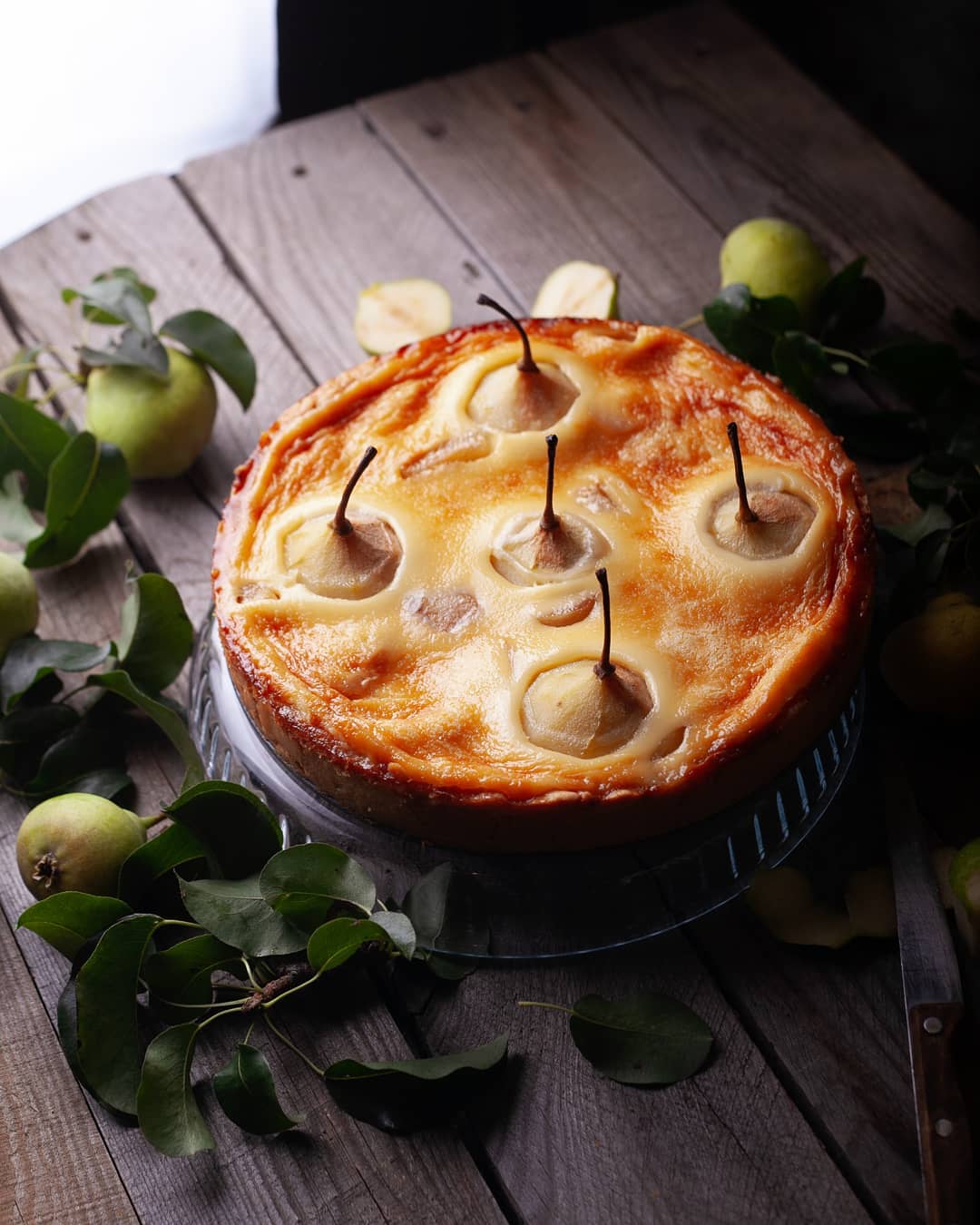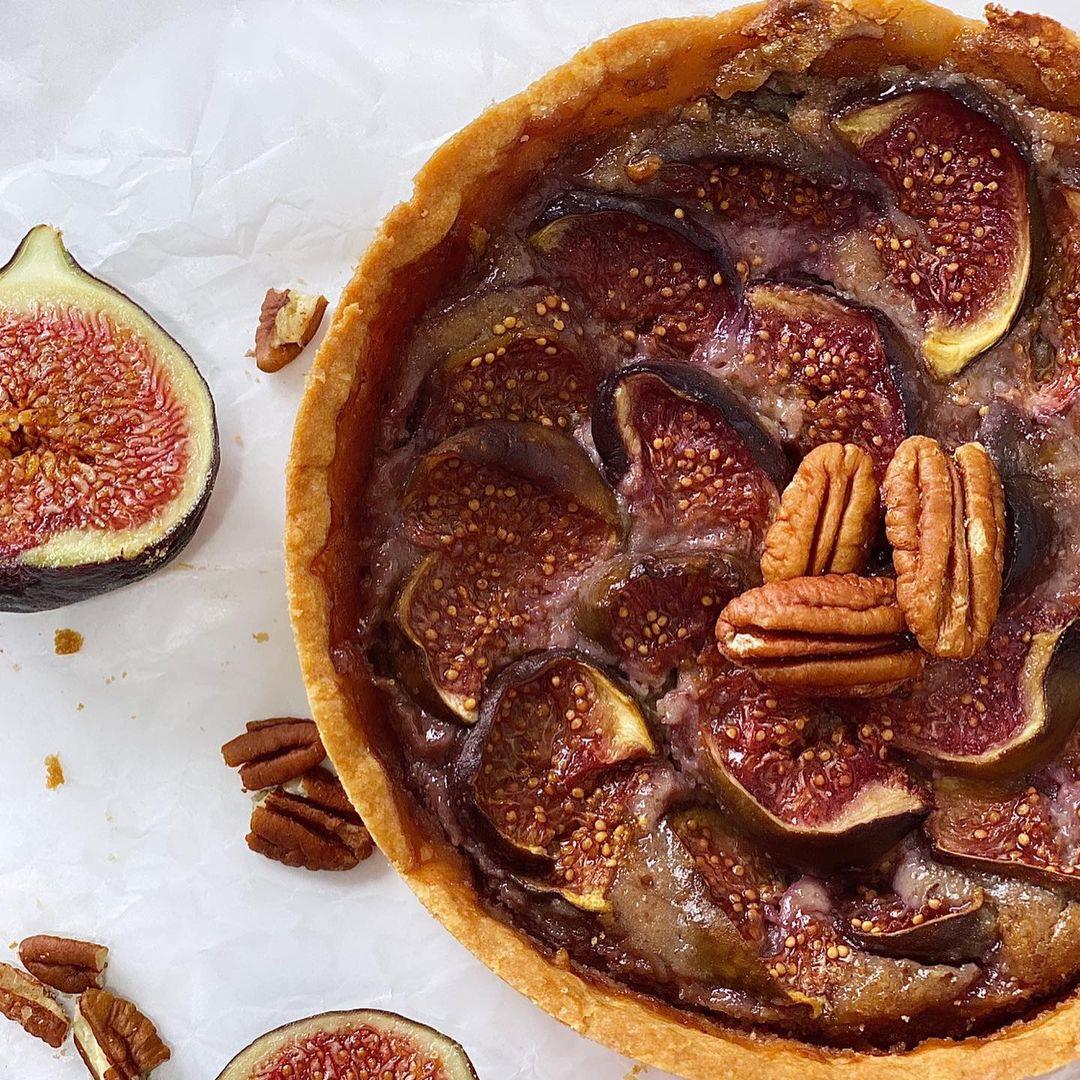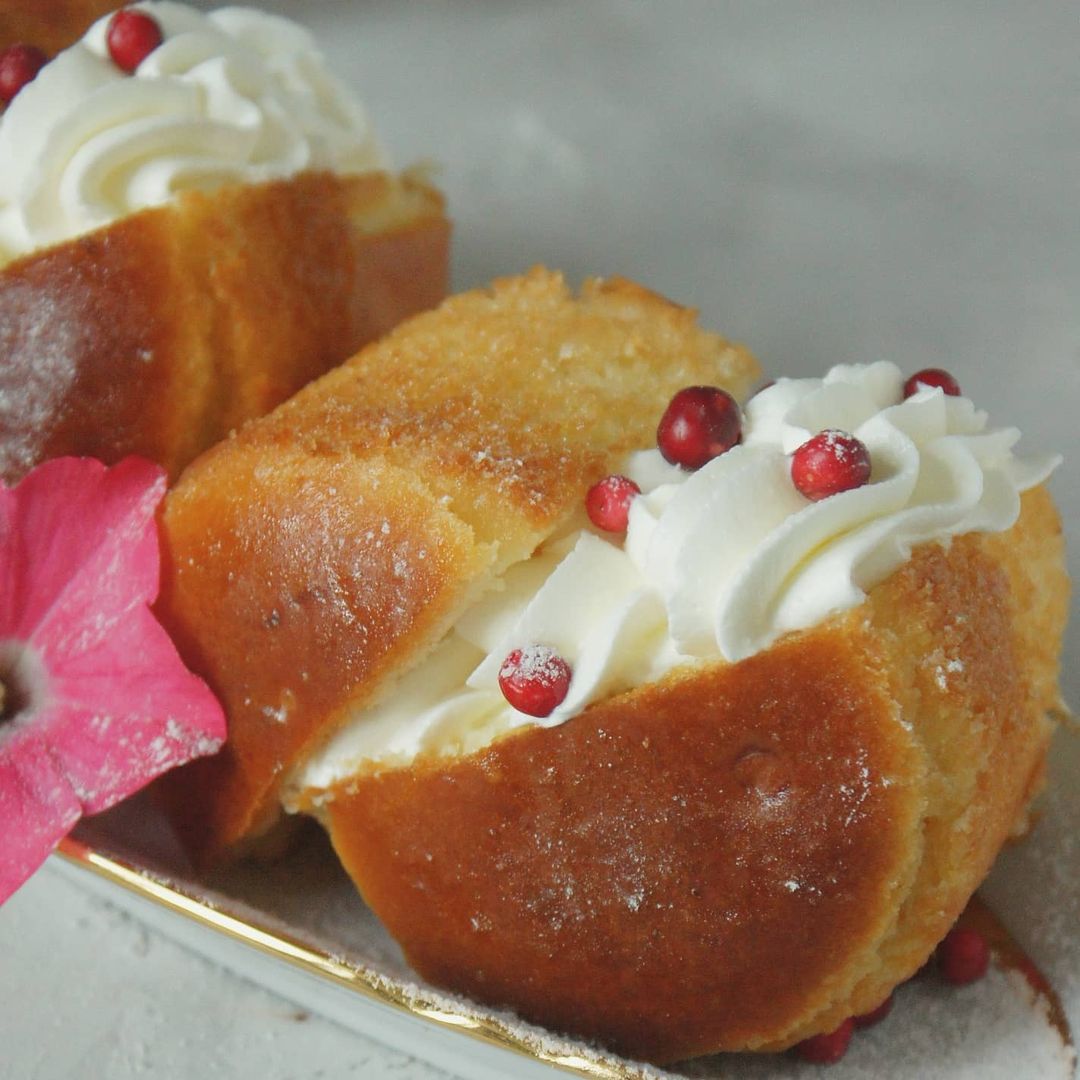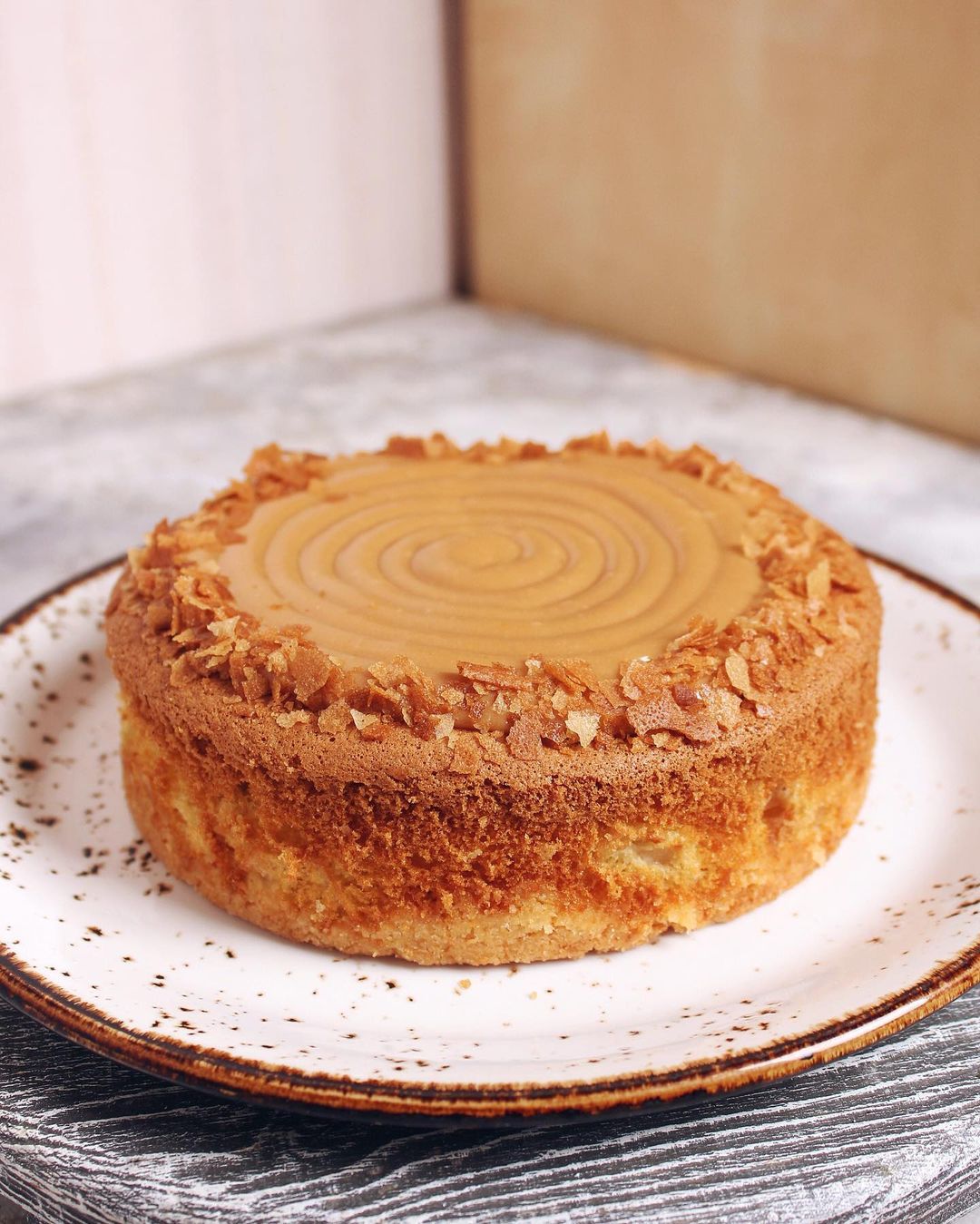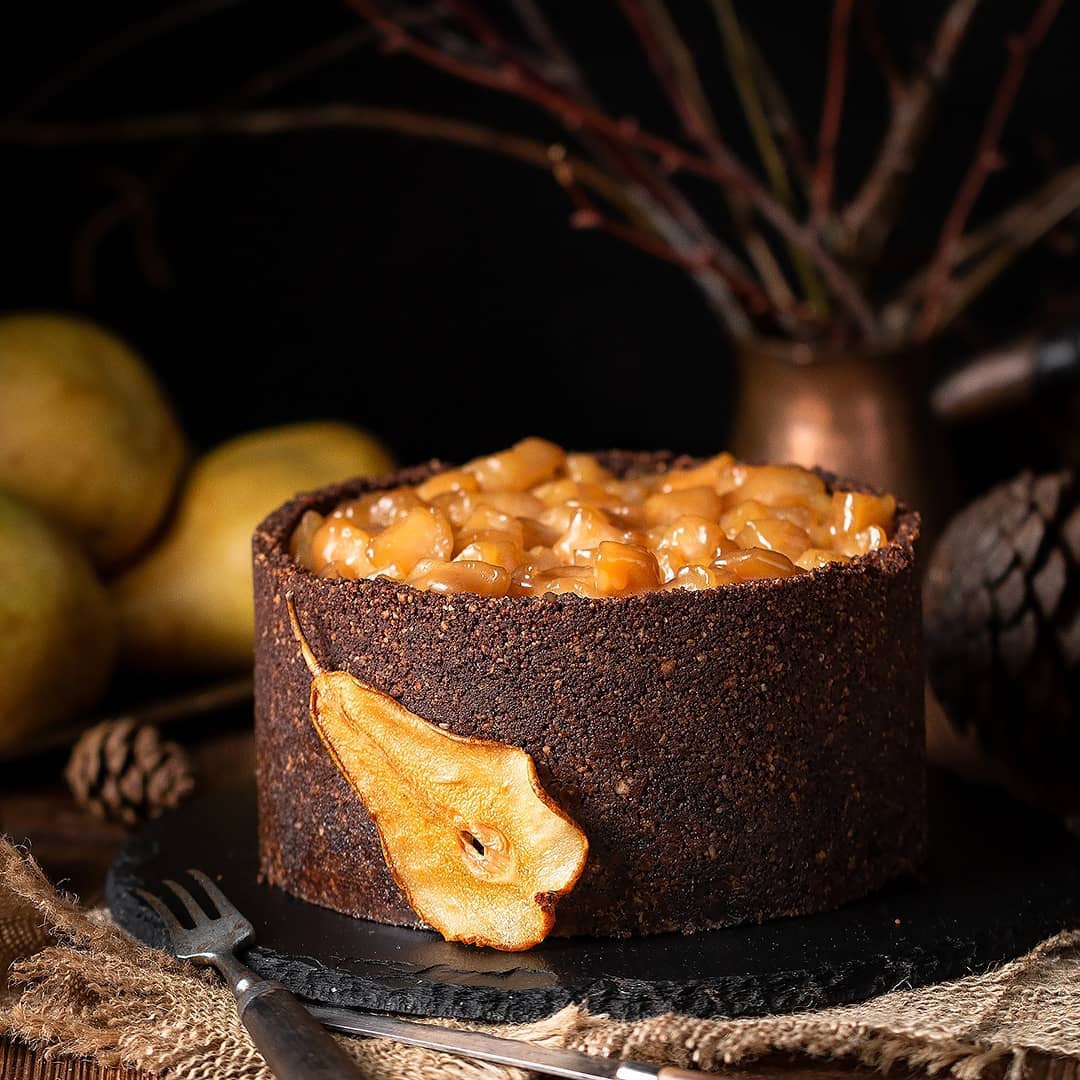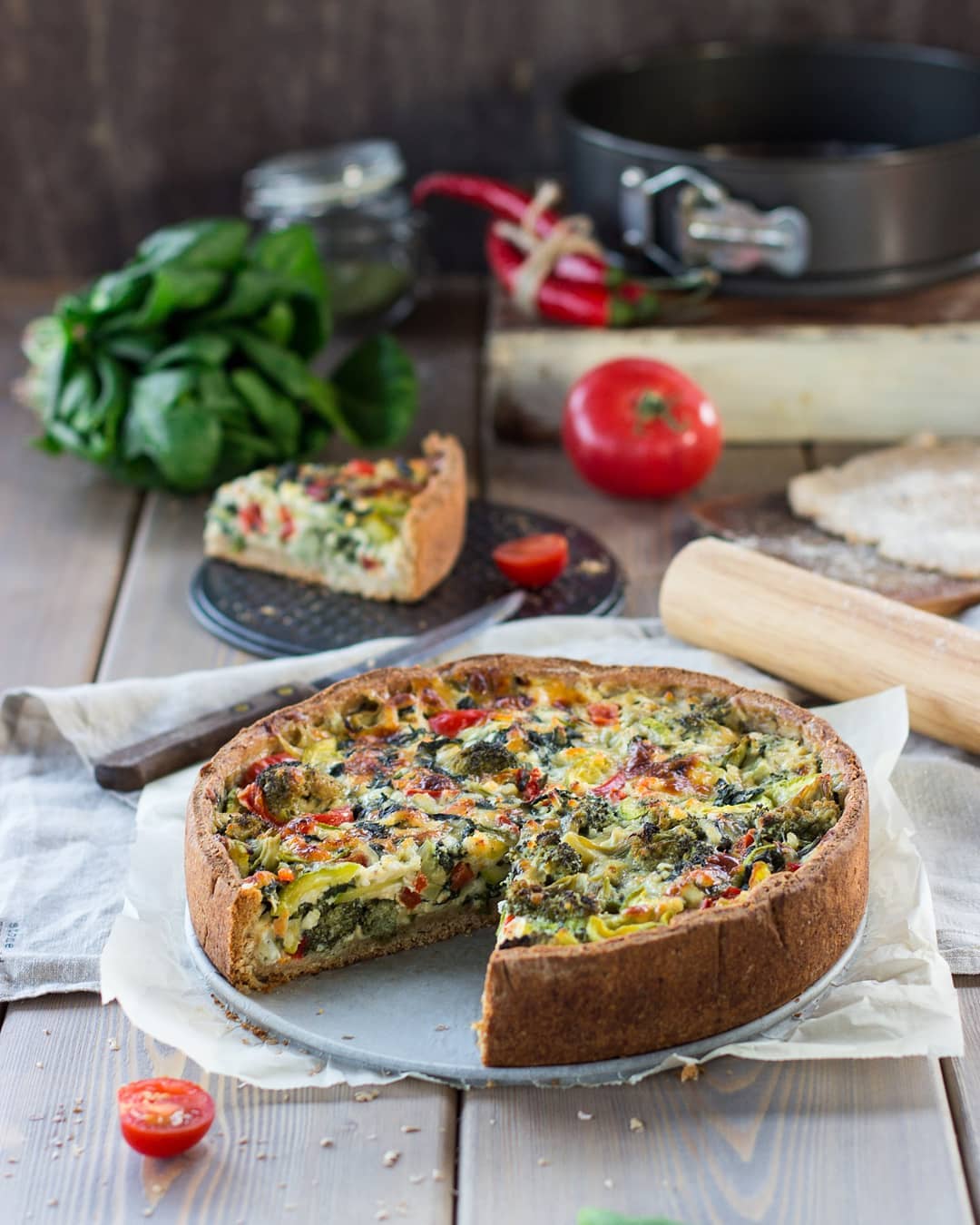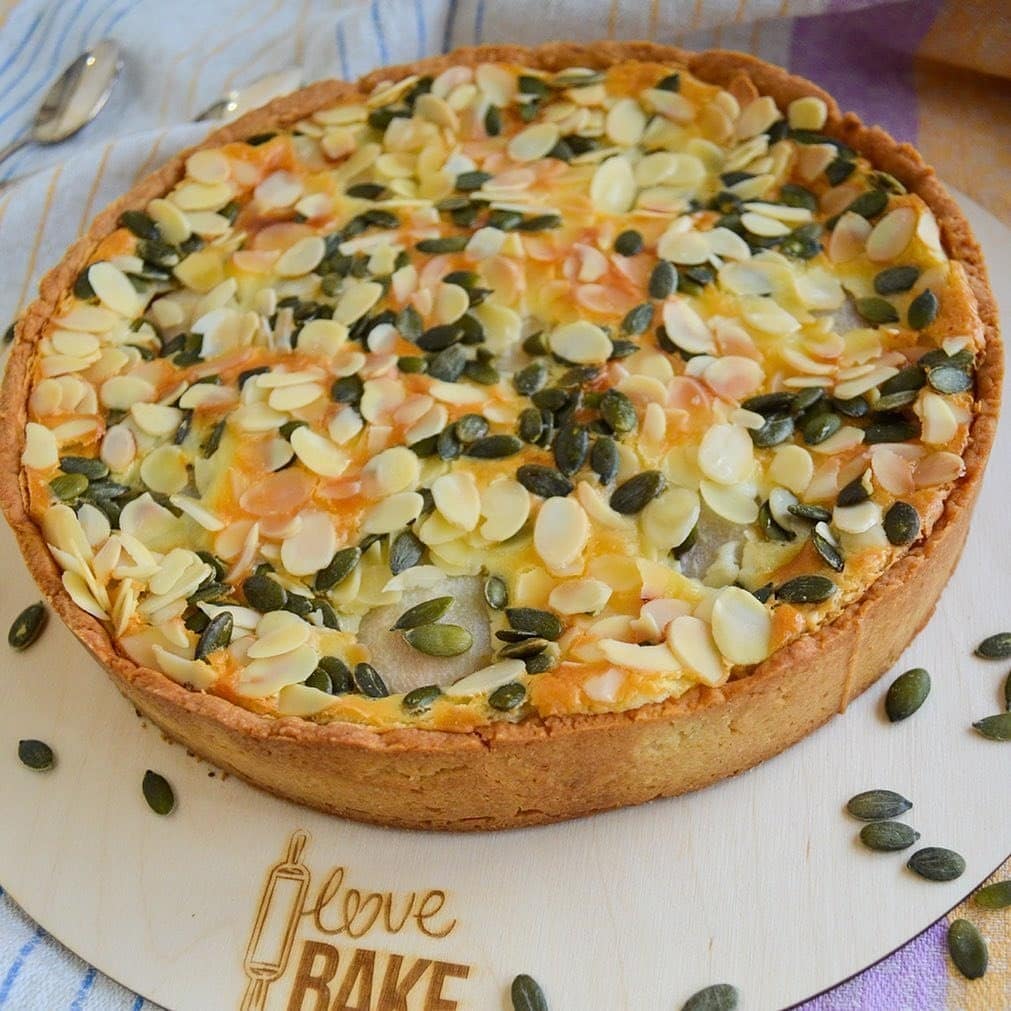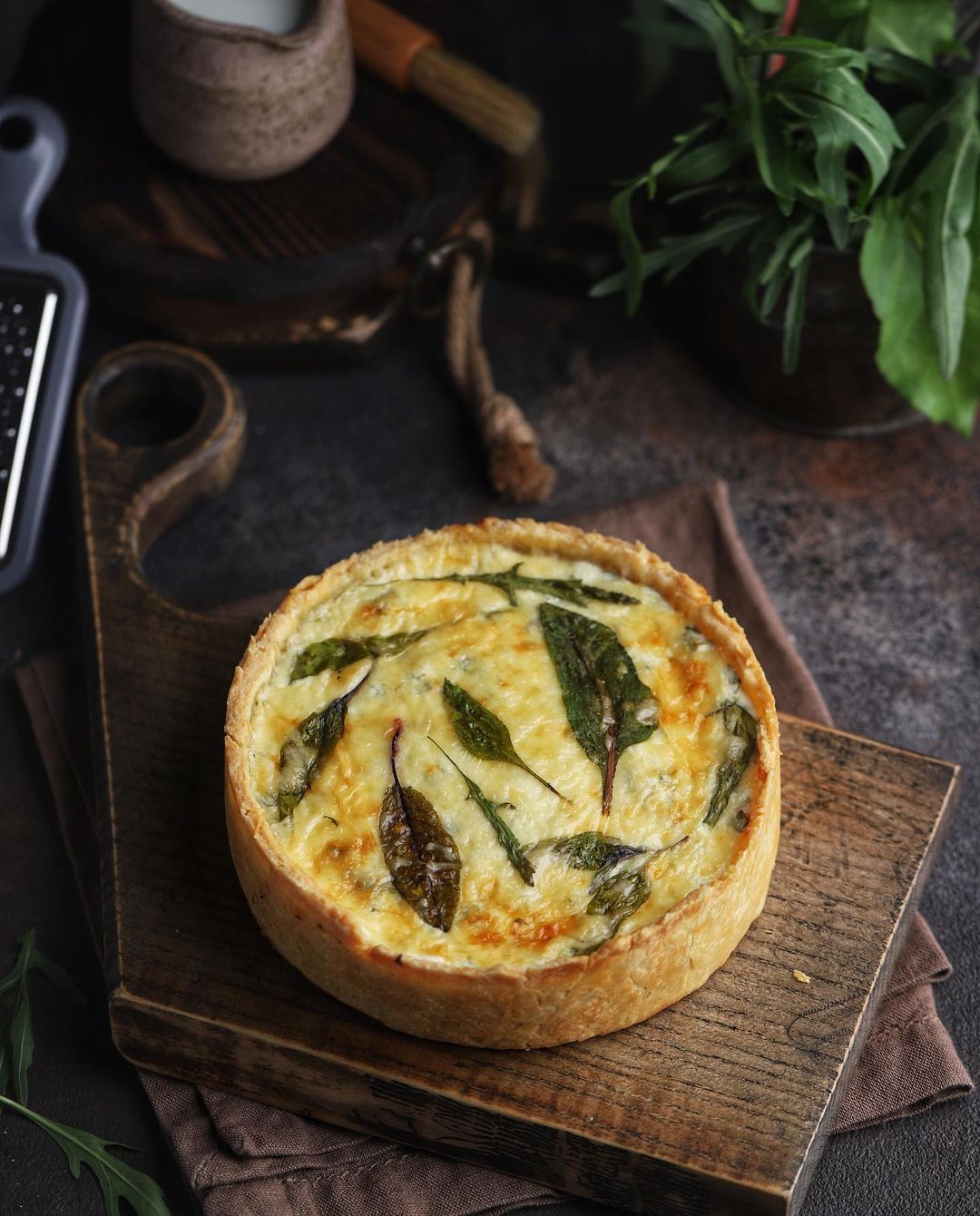Ingredients
Dough
Filling
Crème Brulee Pouring
Instructions
Step 1
Step 2
Step 3
Step 4
Step 5
Step 6
Servings
Equipment
A blender makes quick work of combining your dough ingredients, but if you don't have one, your hands will do the job just as well.
You'll need several mixing bowls for different stages of the recipe; make sure they are large enough to accommodate all ingredients comfortably.
This is essential for rolling out your dough evenly. A wine bottle can serve as a makeshift rolling pin if needed.
The right size pie mold ensures your pastry cooks evenly and sets beautifully.
A sieve helps drain excess water from your boiled pears, keeping the pastry from getting soggy.
Preheat your oven to the correct temperature for best results; an oven thermometer can help verify that it's accurate.
Variations
Faq
- How do I prevent the dough from sticking to the rolling pin?
Lightly flour your rolling pin and work surface before rolling out the dough to prevent sticking. Alternatively, you can roll the dough between two sheets of parchment paper.
- Can I use a different fruit instead of pears?
Yes, you can substitute the pears with apples, peaches, or even berries for a different twist on this classic pastry.
- How can I tell when the crème brûlée layer is set?
The crème brûlée layer should be golden brown and set on the edges, but it should still jiggle slightly in the middle. It will continue to firm up as it cools.
- What's the best way to peel the pears?
Using a vegetable peeler works well for peeling pears, holding the pear in one hand and peeling in a downward motion to avoid slipping.
- Can I make the dough ahead of time?
Yes, you can prepare the dough a day in advance and store it in the fridge. Bring it to room temperature before rolling it out for easier handling.
- How do I store leftovers of this pastry?
Store any leftovers in an airtight container in the refrigerator. It will keep well for up to 3 days. Reheat slices gently in the oven before serving to restore the flaky texture of the crust.

